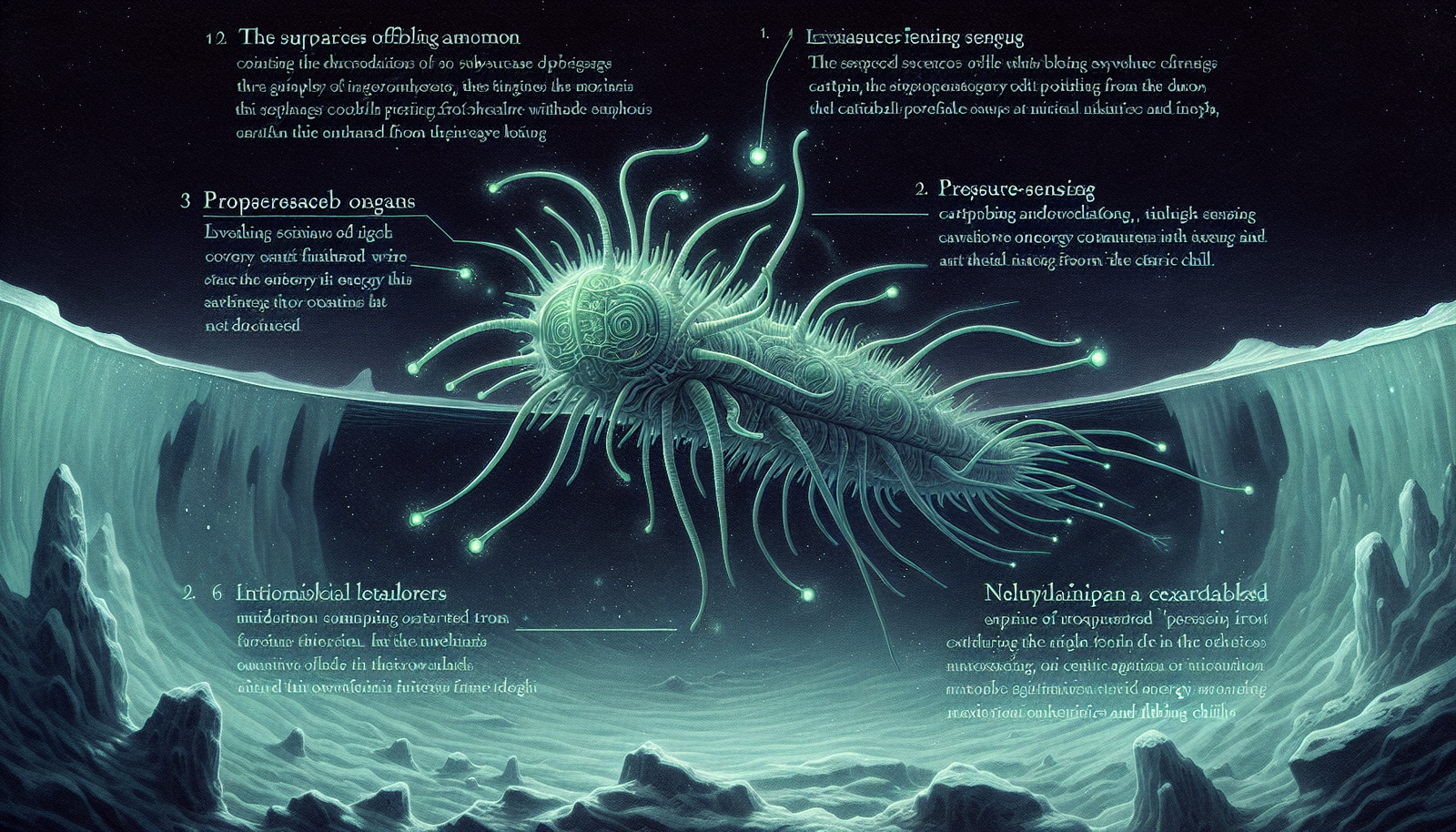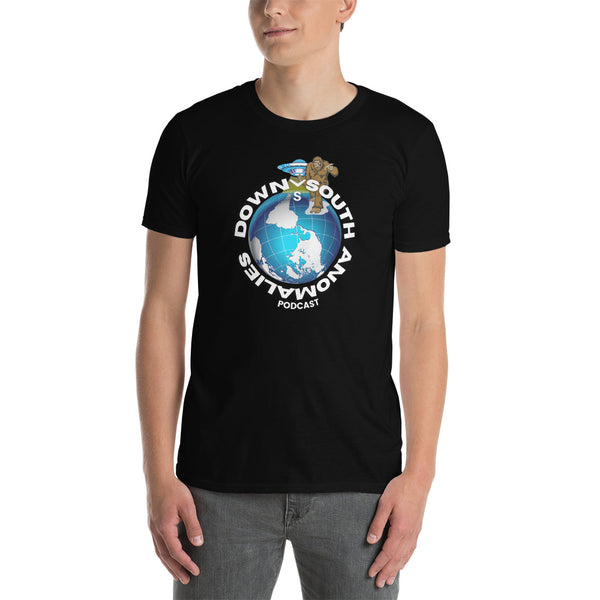Alien Biology: Breaking Earth's Rules

By Malcolm Blackwood, Ufologist
When we peer into the night sky, that timeless question echoes: Are we alone? This question has driven humanity's imagination across millennia, from ancient mythology to modern scientific inquiry. Today, this search has evolved into rigorous scientific frameworks, yet it still demands a balance of methodical investigation and imaginative possibilities.
In my three decades of researching unexplained phenomena, I've discovered that solid evidence often requires us to question our most basic assumptions. Nowhere is this more true than in the study of alien biology. Earth's biodiversity—as vast as it seems—represents just one expression of life's potential in a universe with countless laboratories of evolutionary experimentation.
The central challenge of alien biology lies in freeing ourselves from Earth-centric thinking while using Earth's life as our only verified reference point. This paradox sits at the heart of our quest to recognize truly alien life when—or if—we encounter it.
The Definition Dilemma
NASA defines life as "a self-sustaining chemical system capable of Darwinian evolution." This deliberately broad definition focuses on process rather than specific biochemistry, but even this definition carries Earth-based assumptions.
Most astrobiologists agree on three essential components of life:
- Boundary conditions creating an internal environment at lower entropy than surroundings
- Energy consumption from the environment
- Self-reproduction
Many add a fourth criterion: Darwinian evolution.
But philosopher of science Carol Cleland highlights a crucial problem. Without a universal theory of life, we're working from a sample size of one—Earth life. This raises what she calls the "life as we don't know it" problem: how can we recognize something if it operates on principles completely foreign to our experience?
"Making predictions about aliens is hard," notes Sam Levin from Oxford's Department of Zoology. "We only have one example of life—life on Earth—to extrapolate from."
This isn't merely a theoretical concern. In our search for extraterrestrial life, we might fail to recognize alien biology if we're too wedded to Earth-specific criteria. A microbe using different biochemistry might register as just another interesting mineral formation. A vast, slow-moving entity might seem like a geological process rather than a living organism.
Consider historical examples of ambiguous findings: the Viking Mars experiments in the 1970s produced results that some researchers still interpret as evidence of microbial metabolism, while others attribute them to unusual Martian chemistry. The 1996 announcement regarding the Allan Hills Martian meteorite claimed microfossils of bacterial life—a conclusion most scientists now reject. More recently, the detection of phosphine gas in Venus's atmosphere sparked debates about possible microbial sources.
These cases illustrate how the boundary between life and non-life blurs when examining unfamiliar environments. Without a universal definition, we risk missing the revolutionary discovery we seek.
Earth Life: Our Only Confirmed Reference Point
Earth life provides our singular verified example of biology, and understanding it thoroughly informs our search elsewhere.
Life appeared on Earth with surprising speed after the planet formed, suggesting that when conditions are right, biology might emerge relatively quickly. The research into Earth's early life reveals several critical evolutionary milestones:
- The invention of photosynthesis (approximately 3.5 billion years ago)
- The emergence of eukaryotic cells with specialized internal structures
- The development of sexual reproduction (roughly 2 billion years ago)
- The evolution of multicellular organisms (before 0.7 billion years ago)
Each transition reshaped Earth's biosphere and represents a potential evolutionary pathway for alien life. However, we cannot assume extraterrestrial life would follow this same trajectory.
Earth's extremophiles—organisms thriving in conditions previously thought incompatible with life—provide our best window into alien possibilities. These remarkable creatures expand our concept of habitable environments and suggest life might exist in seemingly hostile extraterrestrial settings.
We've discovered microbes surviving in acid hot springs with pH below 1, bacteria thriving in nuclear reactors, organisms living in the crushing pressure of the Mariana Trench, and tardigrades capable of surviving the vacuum of space. The bacterium Deinococcus radiodurans withstands radiation levels 1,000 times what would kill a human.
As one researcher colorfully noted, "No matter how strange an idea you ever think you've come up with for a species is, I promise you that there is some life form on earth that is even weirder."
Despite Earth life's incredible diversity, certain principles appear universal: the need for a solvent (water on Earth), energy utilization, information storage and transfer, and physical boundaries separating organisms from their environment. These principles guide our search, though alien biology might implement them in ways we've never imagined.
Beyond Carbon: Alternative Biochemistries
Carbon forms the backbone of Earth life because of its unmatched versatility in forming complex molecules. With four available bonding sites, carbon creates stable, energy-efficient structures essential for biological functions.
Silicon, directly below carbon on the periodic table, represents the most frequently discussed alternative. Like carbon, silicon can form four bonds with other atoms, potentially creating complex molecules. However, silicon has significant limitations: silicon-oxygen bonds are less versatile than carbon-oxygen bonds, and silicon compounds generally show less stability at higher temperatures.
Beyond the elemental foundation, alternative solvents might replace water in alien biochemistry. Water serves Earth life brilliantly with its exceptional dissolving capability, stability across a wide temperature range, and ability to facilitate complex chemical reactions.
Alternative solvents with biological potential include:
- Ammonia: Liquid at temperatures as low as -78°C, ammonia could serve as a solvent on frigid worlds.
- Methane and ethane: Found in liquid form on Saturn's moon Titan, these hydrocarbons could potentially support exotic biochemistries.
- Hydrogen sulfide: Though toxic to most Earth life, hydrogen sulfide remains liquid across a wide temperature range.
- Hydrogen fluoride: With chemical properties somewhat similar to water, hydrogen fluoride might serve as an alternative despite its corrosiveness.
Energy harvesting strategies might also differ dramatically from Earth norms. While Earth organisms primarily use photosynthesis or chemotrophy, alien life might employ radiation, temperature gradients, or electrical potential as energy sources.
As researcher David Grinspoon argues, alien life represents "Earth's evolutionary road not taken"—biochemical pathways that might have emerged under different planetary conditions.
Environmental Adaptations and Alien Physiology
Gravity fundamentally shapes biology. On Earth, the gravitational pull determines how tall trees can grow, how blood circulates, and how bones develop. On low-gravity worlds, organisms might evolve dramatically different body plans.
The fictional planet Anu (described in "The Skies of Anu" video) illustrates how low gravity would transform biology. With reduced gravitational constraints, creatures could develop elongated, spindly limbs that would buckle under Earth's gravity. Massive aerial ecosystems might form, with organisms evolving to spend their entire lives aloft. As the video explains, "Every form of life on our planet... all of these creatures and their patterns of life are in some way or another determined by the same invisible force: gravity."
Conversely, high-gravity environments would favor compact body plans with robust structural support—perhaps creatures resembling flattened versions of Earth organisms, with dense musculature and multiple limbs distributing weight more efficiently.
Atmospheric composition represents another critical variable. While Earth life depends on oxygen, alien organisms might evolve to breathe methane, ammonia, or even more exotic compounds. The research materials reveal that breathing mechanisms could vary widely:
- Passive diffusion systems like Earth's arthropods
- Multiple-chamber respiratory systems maximizing efficiency
- Directional airflow similar to birds' unique respiratory architecture
- Chemical extraction systems for gases toxic by Earth standards
Temperature adaptations would similarly break Earth's rules. While Earth has thermophiles surviving at 113°C at deep-sea vents, alien heat-adapted organisms might function at even higher temperatures through specialized proteins and cell structures. At the cold extreme, life might evolve antifreeze compounds and cellular flexibility beyond anything seen on Earth.
The fictional planet Eteria provides a fascinating example of adaptations to extreme temperature fluctuations. With a wildly elliptical orbit creating dramatic seasonal variations, some creatures evolved reproductive cycles where adults die after laying eggs, which hatch when temperatures rise again—a perfect illustration of how alien environments would shape alien life cycles.
Sensory Systems and Alien Communication
Earth already showcases remarkable sensory diversity: sharks detecting electrical fields, birds navigating by Earth's magnetic field, snakes "seeing" infrared radiation, and bats using echolocation. Alien life would likely possess sensory systems even more diverse, possibly including senses completely foreign to human experience.
As Vivian Sayan notes, "Birds have a magnetic field sense, at least some of them, to help guide migration... The amount of senses and how to change them is enormous!"
Consider the mantis shrimp, with 12 color receptors compared to humans' mere three. This creates a perceptual reality we cannot fully comprehend. Now imagine an alien with senses detecting radiation, gravitational variations, or quantum phenomena—their experience of reality would differ from ours as dramatically as our experience differs from that of a blind cave fish.
Communication among alien species might operate through channels undetectable or unrecognizable to humans: chemical signals with complexity beyond Earth's pheromones, modulated electrical fields, gravitational disturbances, or even quantum entanglement.
The way aliens process information would profoundly influence their cognition. A species with distributed nervous systems might develop collective intelligence rather than individual minds. Organisms experiencing time at radically different scales—perceiving seconds as hours or years as moments—would develop thinking patterns incomprehensible to humans.
These perceptual differences create a profound challenge: even if we encountered intelligent aliens, meaningful communication might prove extraordinarily difficult without extensive technological mediation.
Speculative Alien Forms
Earth offers intriguing analogues for potential alien life forms. Slime molds—organisms that can function as either independent single cells or aggregate into coordinated multicellular structures—hint at possibilities for amorphous alien organisms that might lack fixed body plans.
Other fascinating Earth examples include the massive fungi described in the research spanning 8.8 km² of forest floor as a single organism. Such entities challenge our notion of what constitutes an individual and suggest alien life might exist as vast networks spanning planetary surfaces.
The fictional world Herkelion presents another compelling possibility: atmospheric organisms that spend their entire lives in gas-giant-like planets. These creatures would use hydrogen gas for buoyancy and evolve systems for filter-feeding, aerial reproduction, and protection against storms. The video describes "Sky Whales" that "evolve to be as large as possible" because "the bigger their gas envelope, the more lift it produces."
Perhaps the most promising environments in our solar system for actual alien life are the subsurface oceans of icy moons like Europa and Enceladus. Life in these environments would evolve without sunlight, relying instead on chemical energy from hydrothermal vents. Such organisms might develop bioluminescence for communication, pressure-adapted physiologies, and chemosynthetic metabolisms unlike anything found on Earth's surface.
The xenomorph from the Alien franchise, while fictional, presents an interesting case study in alien life cycles. Its parasitoid reproductive strategy, with multiple metamorphic stages and acid-based biochemistry, draws inspiration from Earth parasites but combines features in ways that stretch biological possibility.
Detecting and Recognizing Alien Life
Identifying alien life—particularly microbial life—will likely depend on recognizing biosignatures: chemical indicators suggesting biological activity. Key biosignatures include:
- Atmospheric oxygen alongside methane: On Earth, this combination strongly suggests biological activity, as these gases would normally react without constant replenishment.
- Complex organic compounds with specific chirality: Life tends to create molecules with the same "handedness."
- Dimethyl sulfide (DMS): As mentioned regarding K2-18b, DMS is produced only by living organisms on Earth.
The challenge, as history shows, is that promising biosignatures often have non-biological explanations. The supposed fossilized bacteria in ALH84001 Martian meteorite were later explained as mineral formations. The Viking lander results, initially exciting, remain controversial decades later.
For technologically advanced alien life, different detection strategies apply: deliberate or inadvertent radio transmissions, atmospheric industrial pollutants, artificial lighting patterns, or large-scale construction projects.
The fundamental challenge in alien life detection isn't just technical but conceptual: how do we recognize something as alive if it breaks Earth's rules? This is why philosopher Cleland advocates focusing on "potentially biological anomalies" rather than specific Earth-like characteristics.
Current Research Frontiers
Our solar system offers several promising targets for alien biology research:
Mars continues as our most accessible target, with the Perseverance rover currently collecting samples for eventual return to Earth laboratories. While surface conditions are challenging for life today, evidence suggests Mars once had extensive liquid water, raising the possibility of fossil biosignatures or subsurface microbes.
Europa—Jupiter's ice-covered moon—may host a global subsurface ocean with twice the water of all Earth's oceans combined. The Europa Clipper mission, launched October 2024, will investigate its potential habitability in detail when it arrives in 2030.
Enceladus—Saturn's small icy moon—shoots plumes of water ice into space from its south pole, suggesting a subsurface ocean with hydrothermal activity. These plumes contain organic compounds, making Enceladus a prime target for future life-detection missions.
Titan—Saturn's largest moon—features lakes and seas of liquid methane and ethane, along with a thick nitrogen atmosphere. The Dragonfly mission, scheduled to arrive in 2036, will search for prebiotic chemistry in this unique environment.
Beyond our solar system, the discovery of thousands of exoplanets has revolutionized our search for alien biology. The James Webb Space Telescope can analyze exoplanet atmospheres for potential biosignatures, while future telescopes will improve our ability to characterize potentially habitable worlds.
The recent analysis of K2-18b's atmosphere, suggesting the presence of dimethyl sulfide, represents an exciting development—though scientists remain appropriately cautious about conclusions.
Laboratory research complements space exploration, with scientists creating synthetic organisms, studying extremophiles, and experimenting with alternative biochemistries. The recent discovery of "floating genes" in bacteria, described as "alien biology" by some researchers, reminds us that even Earth life continues to surprise us.
The Philosophical Impact
Finding alien life—even microbial—would transform our understanding of biology and our place in the universe. The discovery would provide a second data point for understanding life's emergence, helping distinguish between universal principles and Earth-specific implementations.
Oxford's study on evolutionary theory and alien life suggests natural selection might be universal regardless of biochemistry. Lead researcher Sam Levin explains: "By predicting that aliens undergo major transitions—which is how complexity has arisen in species on Earth—we can say that there is a level of predictability to evolution that would cause them to look like us."
Beyond scientific implications, confirmed alien life would profoundly impact human self-perception. If life exists elsewhere, are we typical or exceptional? How would this knowledge reshape religious and philosophical frameworks that place humans at the center of creation?
As astrobiologist David Grinspoon notes, the search for alien life is "an ongoing existential exercise in individual and collective self-understanding."
The study of alien biology ultimately teaches us as much about ourselves as about potential extraterrestrial organisms. It forces us to examine our assumptions about what constitutes life and how we define our place in the cosmos. By breaking Earth's rules in our thinking about alien life, we gain a deeper appreciation for the remarkable diversity of our own planet's biology—and perhaps prepare ourselves for discoveries that will shake the foundations of our understanding.
Our search for alien life represents the ultimate expression of human curiosity. Whether we find familiar carbon-based microbes or entities so strange we barely recognize them as alive, the quest itself expands our understanding of what's possible. And in that expansion lies the true value of alien biology—teaching us to see beyond the limitations of our Earth-bound imagination.
From Bigfoot to UFOs: Hangar 1 Publishing Has You Covered!
Explore Untold Stories: Venture into the world of UFOs, cryptids, Bigfoot, and beyond. Every story is a journey into the extraordinary.
Immersive Book Technology: Experience real videos, sights, and sounds within our books. Its not just reading; its an adventure.


























